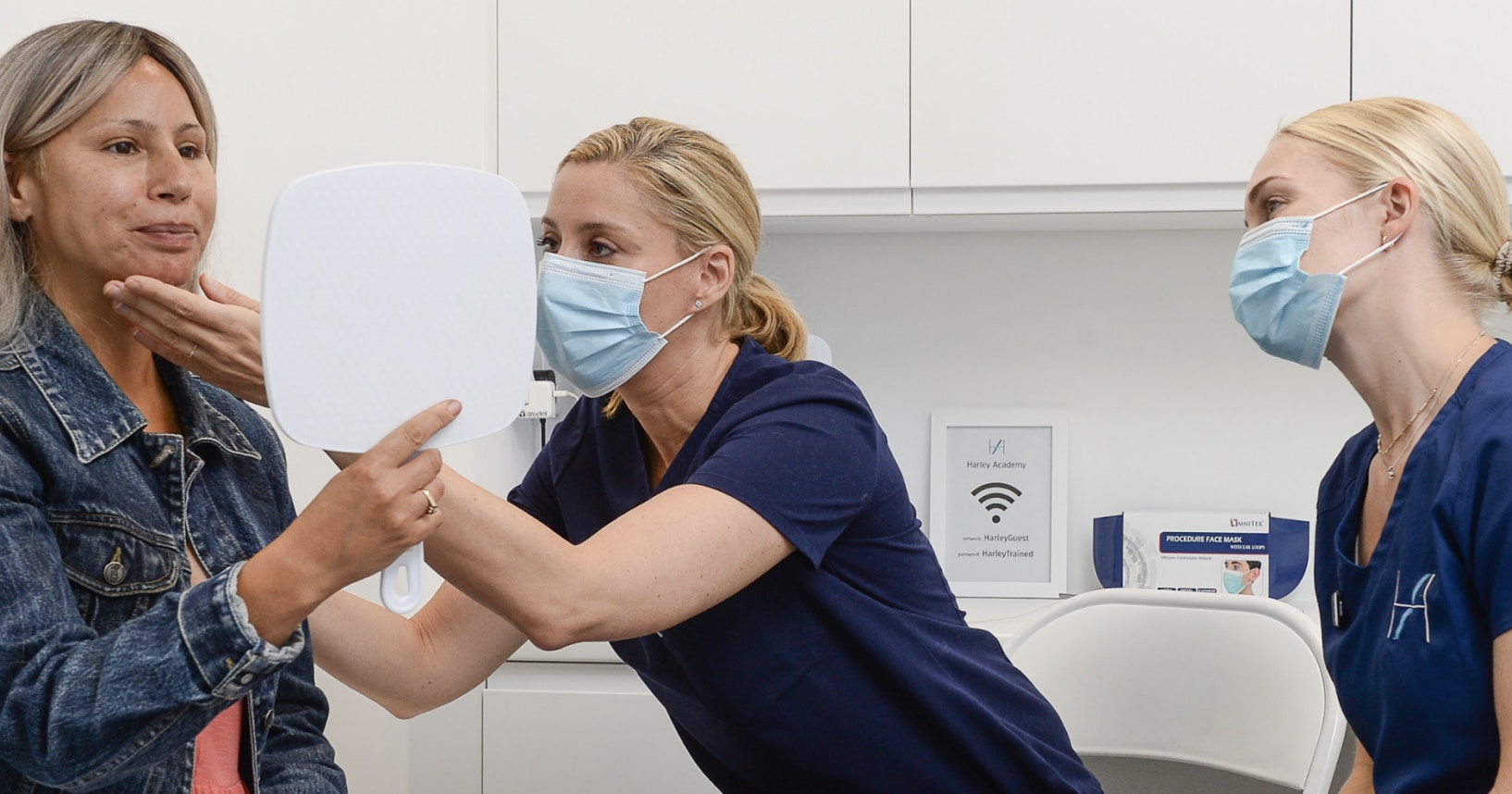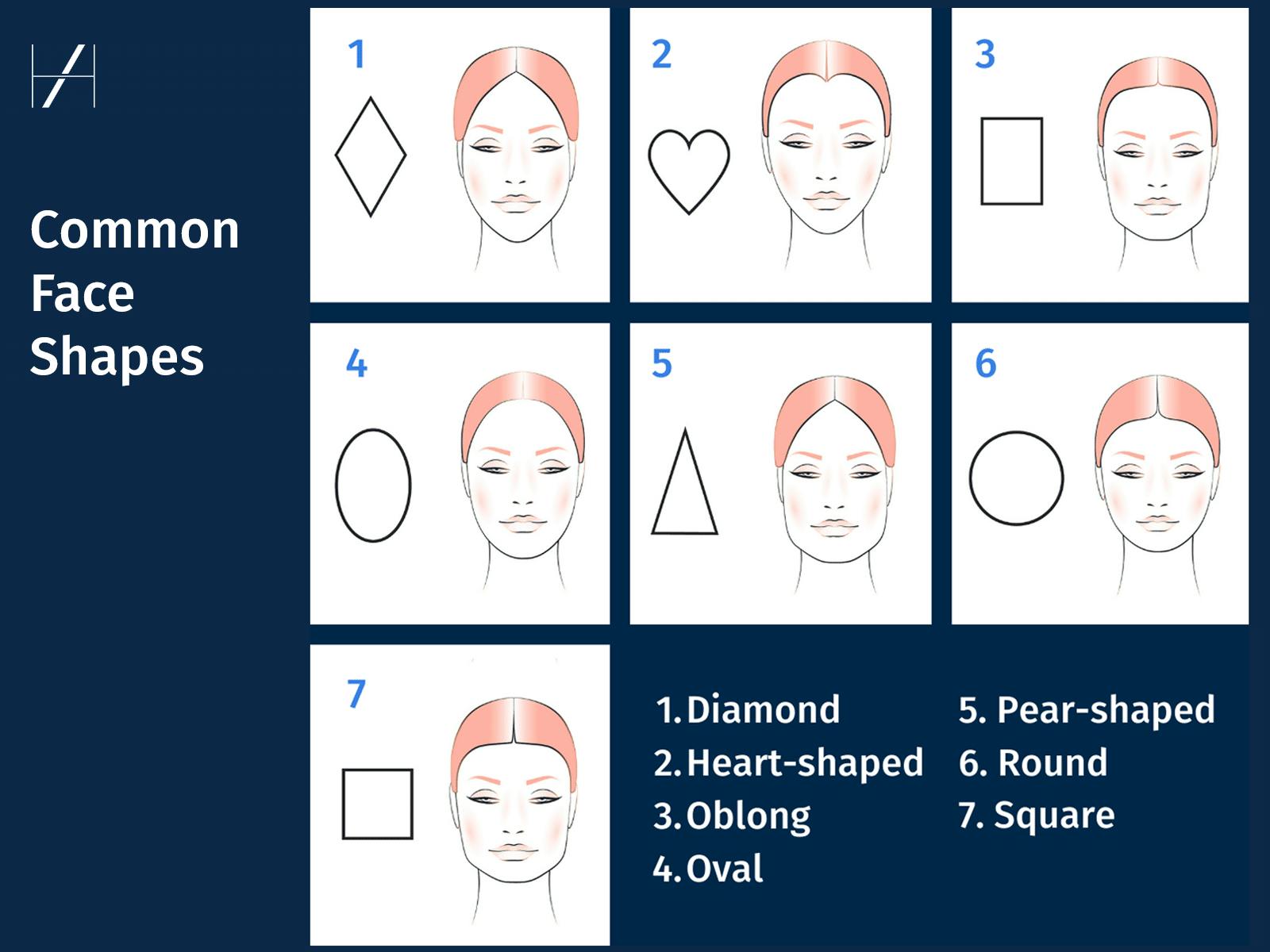Assessing Aesthetics Patients by Face Shape

When assessing aesthetics patients for treatment, do you know which treatments tend to suit which face shapes?
Choosing the most appropriate cosmetic injectable treatments, particularly for an ageing patient, depends on several factors.
Your baseline treatment planning should always consider the patient’s specific concerns and goals, alongside their unique facial presentation. Facial shape contributes to feminisation and/or masculination of appearance, and of course, the range in between. Ethnicity and culture may also affect patient goals.
As a medical aesthetics professional, you want to ensure your treatment plan balances these for effective, proportionate results. Considering how individual treatment areas affect face shape is part of your transition from being a technician to a more experienced practitioner that can consider the holistic aesthetic achieved.
When assessing your patients, their face shape plays a pivotal role in the treatments you may wish to recommend. For each face shape, there are various options you may wish to consider and discuss with your patient.
Start by assessing facial shape and then how each third of the face, upper, mid and lower contributes. Treatments of targetted thirds will help you reach the goal.

THE "TRIANGLE OF YOUTH"
Below you’ll find a quick overview to help you understand what your patients may be looking for, based on their face shapes. But first, we need to explore the traditional beauty standards aesthetics patients tend to seek to meet.
Whether they’re seeking rejuvenation or beautification, your patient will usually have a clear vision as to what they want to look like – and what they don’t. This is prime information you’ll need to tease out of them during consultation to produce the most relevant, personalised treatment plan.
One tool that may help is considering the “triangle of youth”. This describes what’s traditionally perceived to be the ‘ideal’ facial shape, associated with feminine youthfulness and attractiveness in the West. It refers to an inverted triangle with the base at the top. The point is at the chin, where the cheeks form the widest part of the face. This gives the face a more balanced and ‘aesthetically pleasing’ appearance.
As the face ages, this triangle starts flipping to having its base in the lower third. Often treatment plans will attempt to restore the inverted triangle of youth. This is done through volumisation of the cheeks and avoiding too much filler in the lower third.
Although the triangle of youth is a Western invention, many cultures also prize symmetry and proportion. Features such as high cheekbones, a defined jawline, and full lips are also generally considered desirable assets across many ethnicities.
CHANGES TO FACE SHAPE DUE TO AGEING
It’s worth noting that, as we age, our face shape may start to become more square due to volume loss and sagging. Wear and tear of teeth as well as mandibular resorption of bone can also contribute to a loss of height and definition in the lower face, encouraging or exacerbating jowl formation as part of facial ageing.
Sometimes it can be helpful to see photos of your patient when they were younger to see what their baseline was and how you might approximate this in an appropriate way.

AESTHETIC TREATMENT CONSIDERATIONS BY FACE SHAPE
To help you formulate a highly-personalised treatment plan for your patients, consider whether these options may be appropriate, based on their face shape.
Diamond-shaped face
Generally those with a diamond-shaped face may benefit from treatments that broaden and soften the upper middle third. Temple filler and lateral cheek filler may be worthwhile considerations here.
Heart-shaped face
As this face shape is typically considered to be the ‘ideal’, as it is similar to the inverted triangle of youth principle. Look for treatments that address any asymmetry and/or volume loss, keeping the relative width proportions the same.
Oblong face
For patients with a more rectangular face shape, adding volume to the lateral and medial mid-face area can be useful. Increasing the bizygomatic distance beyond the bigonial distance brings more of a heart shape to the face. By treating the cheeks and/or temples you can help to restore a youthful fullness, whilst lower face filler can be used to contour the jawline.
Oval face
As with the oblong face shape, filler treatments that add volume to the cheeks and any hollowing of the temples are helpful. Jawline filler treatments add definition, again, making sure that the bigonial distance does not become too wide.
Pear-shaped face
Mid-face treatments recommended for a diamond-shaped face can often also be advantageous to the pear-shaped face, too. However, be careful to balance the face without adding too much volume or width to the lower third for a harmonious outcome.
Round face
Fillers can be used to sculpt and contour a round face, creating more definition. This involves judicious use of well-placed filler to define without adding too much volume. Sculpting cheek zygomatic treatments emphasise the mid-face, while chin filler will emphasise the inverted triangle tip.
Square face
For patients with a square face, fillers can be used to soften angular features and create a more youthful, rounded appearance. Zygomatic cheek filler will introduce the inverted triangle base. Botox can be used strategically to soften the jawline and create a more rounded appearance should large masseters be contributing.

LEARNING TO PROPERLY ASSESS YOUR AESTHETICS PATIENTS
Being able to assess your patients properly is a truly valuable skill for an aesthetics practitioner.
The better your clinical consultation, the more informed your treatment plan will be. And the more informed your treatment plan is, the more personalised treatments you’ll deliver, leading to bespoke, natural-looking enhancements when paired with safe and effective injecting techniques.
As a Harley Academy trainee, you’ll learn how to perfect your patient consultation; you’ll quickly learn to distinguish a rudimentary technician from an aesthetics specialist approach.
If you’re a doctor, dentist, nurse or midwife seeking to transition your medical skills into a career in aesthetics, get in touch today. Our dedicated Courses team will be able to talk you through your options based on your experience and availability. They’ll then recommend the best aesthetic medicine training courses for you, according to your criteria.
Curious about what it’s really like to work in medical aesthetics and just want to know a bit more? Join our next Aesthetics Careers Open Evening for a fun, informative and inspiring session where all your questions will be answered. Just make sure you RSVP to secure your spot at this free event as places are always limited.
All information correct at the time of publication
Download our full prospectus
Browse all our injectables, dermal fillers and cosmetic dermatology courses in one document
By submitting this form, you agree to receive marketing about our products, events, promotions and exclusive content. Consent is not a condition of purchase, and no purchase is necessary. Message frequency varies. View our Privacy Policy and Terms & Conditions
Attend our FREE open evening
If you're not sure which course is right for you, let us help
Join us online or in-person at our free open evening to learn more
Our Partners














STAY INFORMED
Sign up to receive industry news, careers advice, special offers and information on Harley Academy courses and services

